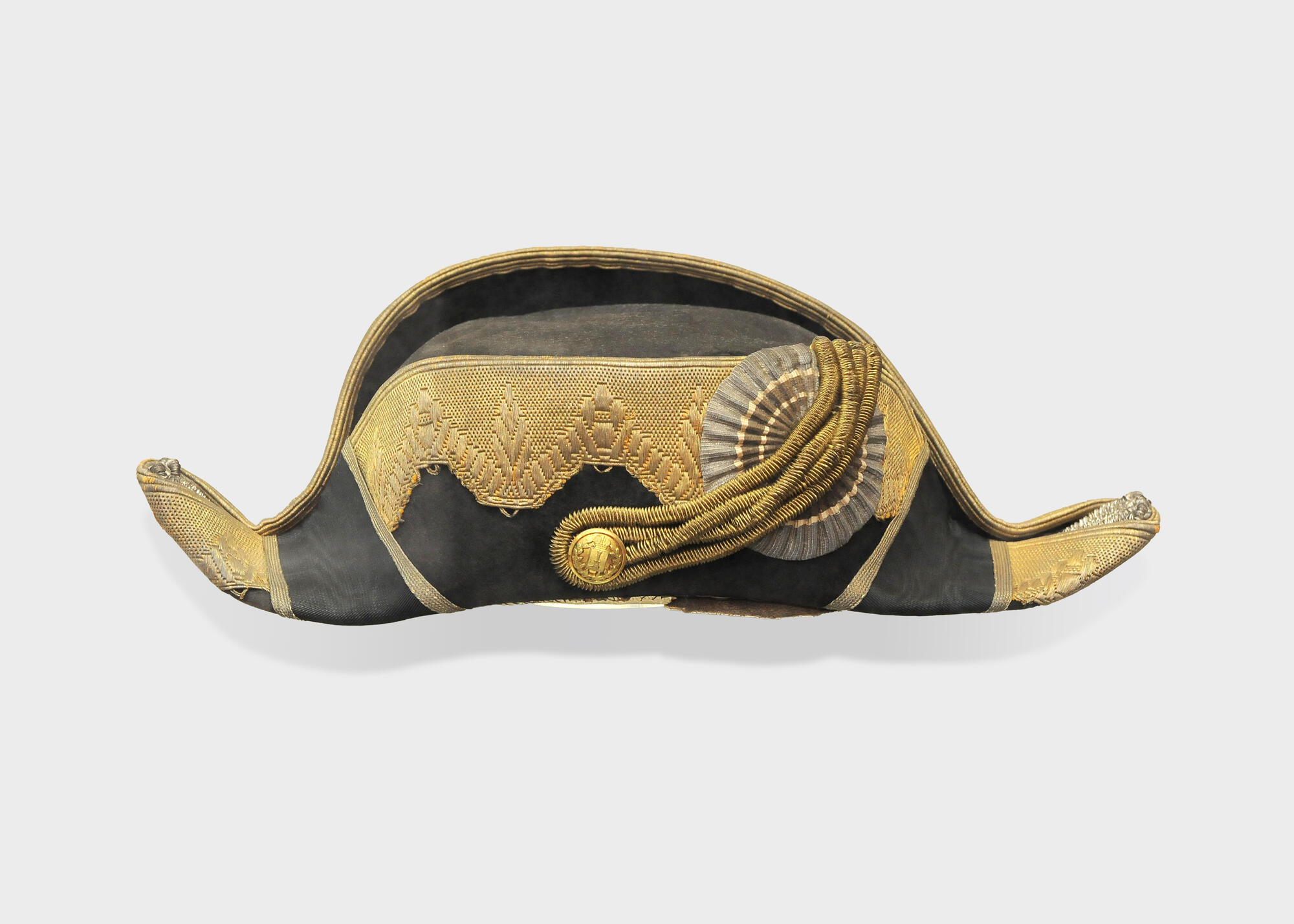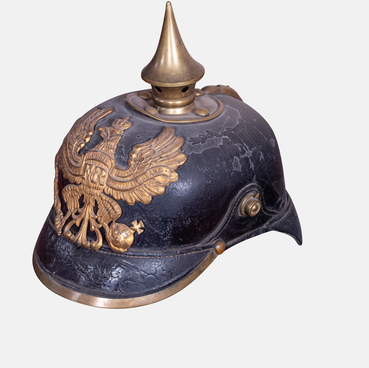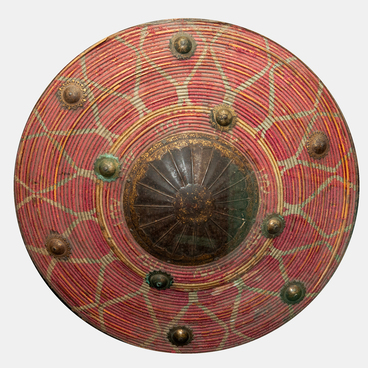The exhibition of the Ulyanovsk Regional Museum of Local Lore named after Ivan Goncharov presents a bicorne headdress, which was a mandatory element of the ceremonial dress of a civil department official in the second half of the 19th — early 20th centuries.
The name of the headdress comes from its shape. A two-cornered hat, or bicorne (also bicorne in French) replaced the bulkier tricorne at the end of the 18th century. The bicorne is made of black felt. A large round cockade is attached to the right side. The cockade ribbon has faded over time.
In Russia, a French-type cockade is mentioned in documents dated 1724. The hats of cavalry guards had white rosette cockades in honor of the coronation of Catherine I. Six years later, in 1730, Anna Ioannovna ordered the wearing of cockades throughout the army in colors that would become traditional. The black, yellow (or orange) and white cockade was inspired by the heraldic colors of the coat of arms. By the end of the 18th century, Emperor Paul I slightly changed the cockade, choosing the colors of the ribbon of the most honorable military order in Russia — the Order of St. George. The cockade is crossed diagonally by a silver braid, secured with a button depicting the coat of arms of Simbirsk framed by a laurel branch. The crown of the hat is decorated with a galloon. The brim of the bicorne is decorated with a silver cannetille. The inside of the hat is lined with silk lining. The undercrown ribbon is made of thin leather.
At the beginning of the 19th century, the bicorne hat, which was dubbed “Wellington” in Russia, was popular. It was the official headdress of the Russian army along with the shako cap from 1803 to 1845. The ranks were distinguished by the plume on the bicorne, the cockade, and the style and width of the galloon. Oftentimes, officers in their portraits were depicted wearing bicornes. The way a soldier put the hat on helped to determine which department he belonged to. If the bicorne was worn in the side-to-side style — it was an officer; if it was worn fore and aft, then it was a general staff officer of His Imperial Majesty’s retinue.
At the end of the 19th century, the bicorne hat became part of the ceremonial clothes of Russian officials. Unlike its predecessor, the tricorne, the bicorne could be easily folded and took up less space; this was all the more important since the headdresses were mandatory at receptions and balls. The bicorne was also worn as a ceremonial headdress by Russian civil department officials until 1917.


